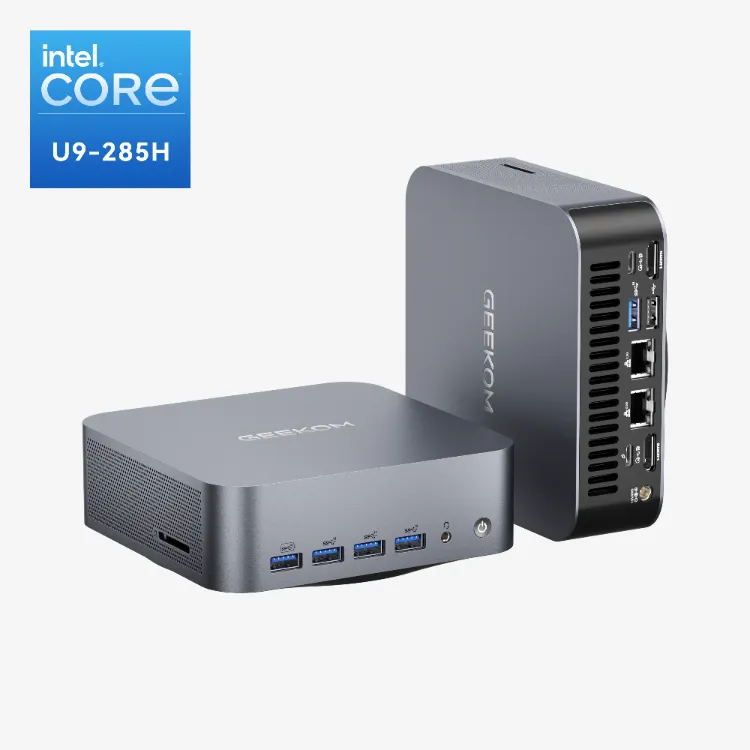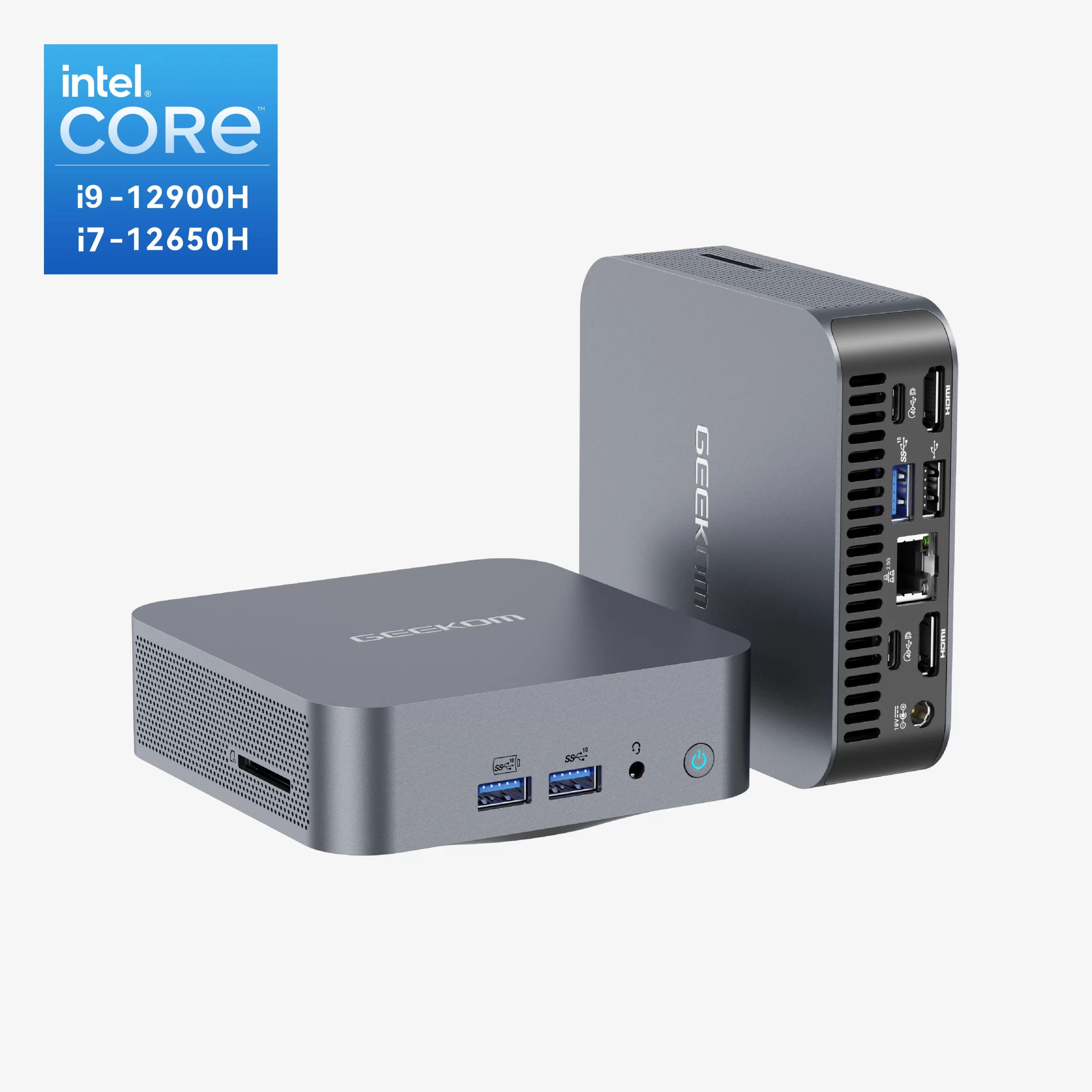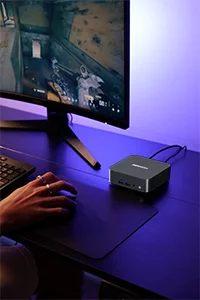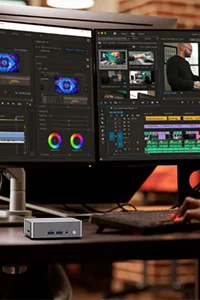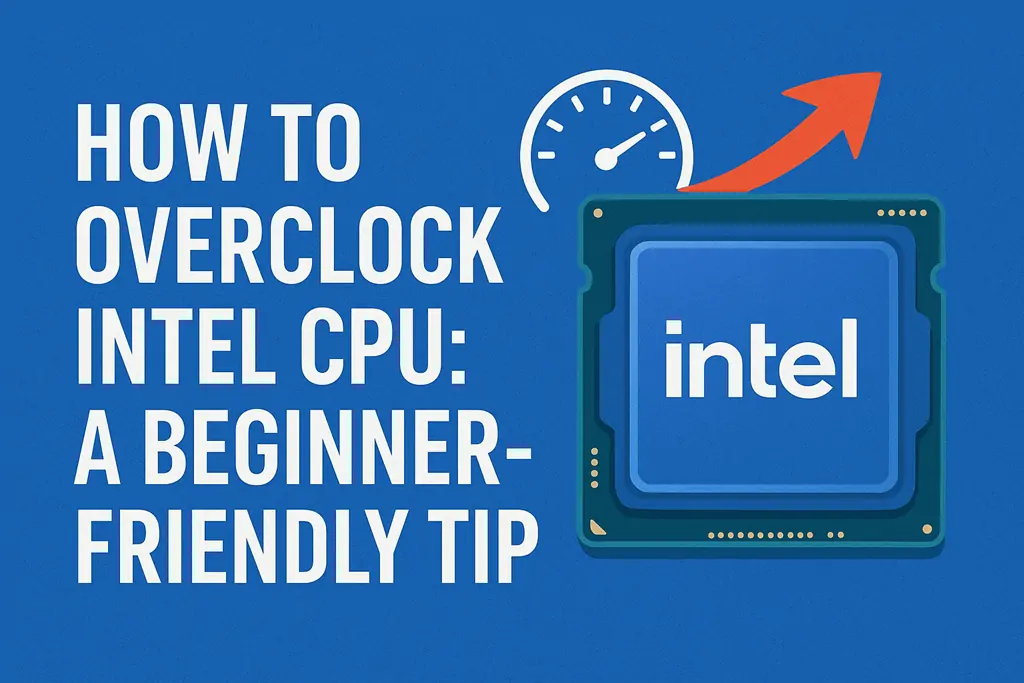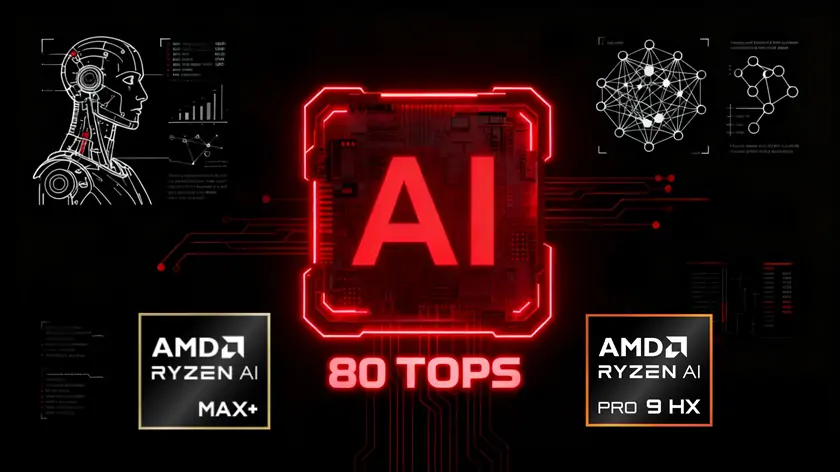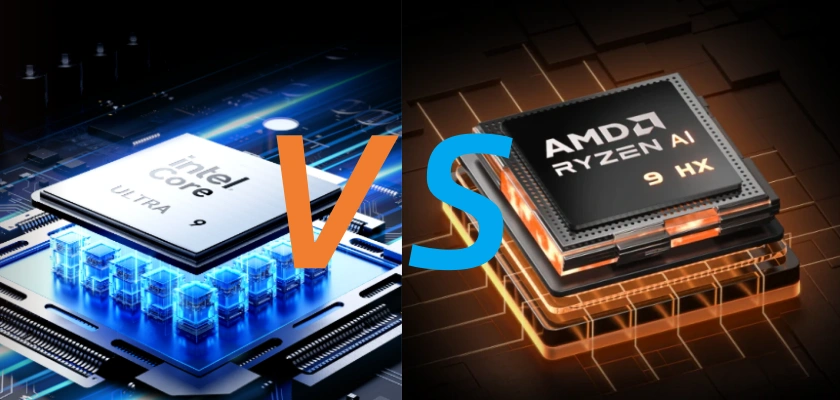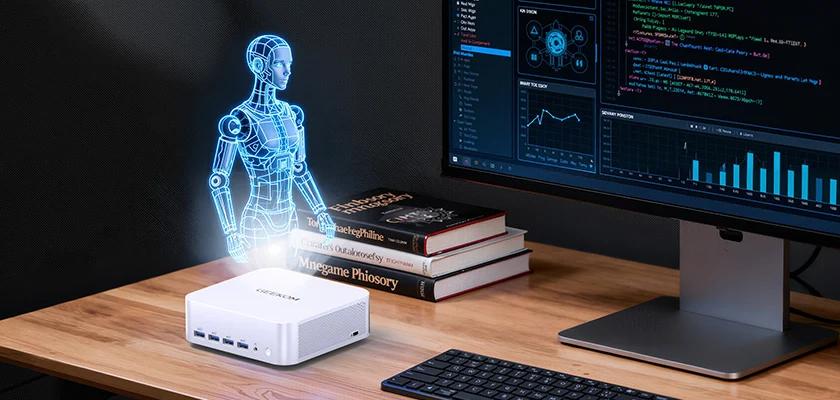Have you ever thought your PC could do more? We have good news for you if you have an unlocked Intel CPU. Overclocking is vital to unlocking that potential. It pushes your processor past its factory settings, which makes games, content creation, and everyday tasks run faster. Follow this step-by-step guide to overclocking your unlocked Intel CPU. It is simple enough that even a beginner can understand it.
PART 1: Setup & Preparation for Overclocking
What You Need Before You Overclock an Intel CPU
You will need to make sure you have the right tools before you start overclocking. Like getting ready for a fun but difficult hike: you need the right gear to make sure you stay safe and have a great time. What you will need is this:
A Compatible K-series Intel CPU
Overclocking is only possible on some Intel processors. An “unlocked” processor is one that Intel marks with a “K” or “KF” at the end of the model name, like Core i9-12900K. The purpose of these chips is to overclock.
A Z-series Motherboard
A motherboard with a “Z” chipset, like the Z690 or Z790. You will also need a K-series CPU. Overclocking is possible with these motherboards because their BIOS has the right settings.
An Aftermarket CPU Cooler
Your CPU makes more heat when you overclock it. This much heat is too much for the cooler that may have come with your processor. For your CPU to stay safe, you will need an aftermarket cooler with more power. We will talk about this some more soon.
Thermal Paste
Thermal paste is an important substance that helps move heat from your CPU to your cooler. Even if your aftermarket cooler comes with some, it is still a good idea to have a good tube on hand.
A Reliable Power Supply Unit (PSU)
Overclocking uses more power. A good PSU that can keep the power going to your parts is what you will need.
Patience
The process of overclocking involves testing and making small changes over time. To get a stable and safe overclock, you need to be patient.
What Overclocking Does
Overclocking is basically the process of raising the clock speed of your CPU. The clock speed is like the processor’s heartbeat. If your CPU’s clock speed is higher, it can do more calculations per second, which makes it run faster. This could mean higher frame rates in games, faster video rendering, and an overall faster, more responsive computer or mini PC for you. This extra performance does cost something, though: it uses more power and heat. Overclocking can also shorten the life of your CPU if you do not do it carefully. Do not worry, though; this guide will teach you the right way to do it.
Cooling is Everything: Air vs AIO vs Custom Loop
It is very important to remember that cooling is the most important part of an overclock. Your CPU will get hotter as you use it more. Thermal throttling means that if it gets too hot, it will automatically slow down to protect itself from damage. This goes against the point of overclocking. In the worst case, too much heat could damage your processor permanently.
- Stock Coolers: For overclocking, the basic coolers that some CPUs come with are not enough. You need to get better.
- Air Coolers: These are a good place to start and can work really well. To get the heat off the CPU, they use both heat pipes and a big heatsink with a fan.
- All-in-One (AIO) Liquid Coolers: AIOs are even better at keeping things cool. They use a closed loop of liquid to move heat from the CPU to a radiator, where fans remove it. A lot of people who overclock choose them.
- Custom Water Cooling Loops: A custom cooling loop is the best way to get the best cooling performance. This is the most advanced and expensive option, but it has the most cooling power.
BIOS vs Intel XTU: Best Way to Overclock
To overclock your Intel CPU, you can either use the BIOS on your motherboard or the Intel Extreme Tuning Utility (XTU) software in Windows. Each has good and bad points.
- BIOS (Basic Input/Output System): This is the most common and powerful way to overclock. The BIOS has all the settings you need to fine-tune your overclock so that it works and stays stable as well as possible. We suggest this method because it gives you the best results, even though it can be a little scary at first.
- Intel XTU: Intel XTU is a Windows-based utility program. You can use it with less trouble, and it is a good way for people who are new to overclocking to start. Not as stable or powerful as overclocking through the BIOS is one of the bad things about it.
The best way to get a stable overclock is to use the BIOS method, which is what this guide is all about. You should take the time to learn the BIOS method because it will help you understand how your computer or mini PC works better.
Update BIOS & Back Up System First
After making changes, you should make sure that the BIOS on your motherboard is up to date. Updates to the BIOS often make the system more stable and compatible. The most recent BIOS is usually available on the website of the company that made your motherboard. Before you start, it is also a good idea to back up your important files or set up a system restore point. It is not likely that you will lose any data, but it is better to be safe than sorry.
PART 2: How to Overclock Intel CPU Step-by-Step
Step 1: Access BIOS/UEFI Settings
First, you will need to get into your computer’s BIOS. To do this, most people restart their computer and press the “Delete” or “F2” key on their keyboard several times while it is starting up. It depends on who made your motherboard, so if you are not sure what key to use, check the manual that came with it. You will probably see a simpler “EZ Mode” once you get into the BIOS. For the overclocking settings, you will need to find a way to get into “Advanced Mode.”
Step 2: Adjust CPU Multiplier
The CPU multiplier, which is also called the CPU ratio, is what overclocking is all about. The base clock (which is usually 100MHz) times this multiplier tells you how fast your CPU’s clock is. In this case, a multiplier of 47 would lead to a clock speed of 4.7GHz (100MHz x 47). You should set the CPU ratio by hand and begin by making it a little higher. To get your CPU to 4.0GHz, say, you could try a multiplier of 40 if its base clock is 3.7GHz. Increasing the multiplier by two or three is a good place to start. This will give you an extra 200 to 300MHz.
Step 3: Tweak Core Voltage
You will probably need to raise the CPU’s core voltage to support the faster clock speed. Being careful is important for this important step. Your CPU can get hurt by too much voltage. Between 1.2V and 1.35V is a safe place to start for the core voltage. First, make the increase small, and only make it bigger if your system is not stable. As both Intel and Tom’s Hardware experts have said, the golden rule for modern processors with standard cooling is not to go over 1.4V.
Step 4: Load Line Calibration & Power Limits
With Load Line Calibration (LLC), the CPU voltage does not drop when it is under a lot of stress, which can lead to instability. Set LLC to a medium or high level. You might also need to raise your CPU’s power limits so it can use more power for longer periods of time.
Step 5: Save BIOS & Boot to Windows
You should save your changes and restart your computer after making the first changes. You can save your settings as a profile in most BIOSs. This is helpful in case you need to go back to them later. When you save, your computer will restart and go straight to Windows.
Step 6: Stress Test with Cinebench / Prime95
Stress testing is the next and most important step. To find out if your overclock is stable, follow this guide. Your CPU will be pushed to its limits by programs like Cinebench R23 and Prime95. Keep a close eye on your CPU temperature during one of these stress tests that lasts at least 30 minutes. As long as the load is below 85°C, the temperature should stay low. You will need to go back into the BIOS and either lower the multiplier or raise the voltage if your computer crashes or you see any errors. This means that your overclock is not stable.
Step 7: Benchmark & Compare Before vs After
It is time to see what you have gained once you have a stable overclock. Benchmarking programs like CPU-Z, Cinebench, and Geekbench let you see how your new performance stacks up against your old one. You can also look for performance boosts in real life, like more frames per second (FPS) in your favourite games. This is the fun part where you can see the results of your hard work!
👉Read more about AMD Overclocking Guide: Unlocking the Hidden Potential of Your CPU
Troubleshooting Common Overclocking Issues
You might have some problems even if you are very careful. Here are some issues that people often have and how to fix them:
- PC Won’t Boot: If your PC will not boot, it is likely because you overclocked it too much. That is what you need to do (more on that below).
- BSODs (Blue Screens of Death) Under Load: This means the structure is not stable. You could try lowering the multiplier or slightly raising the CPU voltage.
- High Idle Temps: If your CPU is hot even when you are not using it, the cooling may not be good enough or the voltage may be too high.
- Safe Voltage Ranges: For everyday use, try to stay below 1.4V.
How to Reset BIOS if Overclock Fails
Do not worry if your computer will not start up after you try to overclock it. It is easy to return your BIOS to its original settings. You can do this in a few different ways:
- Clear CMOS Jumper: For most motherboards, there is a jumper on the board that you can use to clear the CMOS. This will reset the BIOS.
- Remove the CMOS Battery: It is also possible to take out the small, round battery from the motherboard for a few minutes and then put it back in. Also, this will clear the BIOS.
- BIOS Reset Option: A lot of new BIOSs have a feature that lets you go back to the factory settings.
Optional: Undervolt After Overclock for Better Temps
You can try to undervolt your CPU once you have a stable overclock. That means keeping the same clock speed while slightly lowering the voltage. This might help lower your temperatures and power use. An easy way to undervolt is to use Intel XTU.
Table: Safe Voltage & Temperature Ranges for Intel CPUs
| CPU Generation | Safe Voltage Range | Max Safe Temp |
| 12th Gen & Newer | 1.1V – 1.35V | 85°C |
| 10th/11th Gen | 1.0V – 1.35V | 85°C |
Note: This is a general list of rules. Always look at the documentation that came with your CPU for the most up-to-date information.
It is possible to get more performance from your hardware by overclocking an unlocked Intel CPU. You can safely get your processor to do what it is really capable of if you follow this guide, take your time, and put stability and cooling first. Take advantage of the faster speed!
Final Tips for Safe Intel CPU Overclocking
- Never go beyond 1.4V: This is the most important rule for daily overclocking safety.
- Prioritise cooling: For a safe and stable overclock, you need good cooling.
- Monitor long-term stability: You should still keep an eye on your overclock over time to make sure it is stable, even if it stays stable in a stress test.
- Accept the silicon lottery: Every CPU is different. Some will overclock better than others. Don’t be discouraged if you can’t reach the same clock speeds as someone else with the same CPU. As the experts at PCMag put it, it’s a “silicon lottery”.
FAQs
What Intel CPUs can be overclocked?
Only K-series and X-series Intel CPUs can be overclocked.
Is it safe to overclock my CPU?
Yes, if done properly and with good cooling. As TechRadar notes, the process is “actually quite simple, and pretty safe.”
Will overclocking void my warranty?
Yes, for Intel processors, it can void your warranty. Intel’s official stance is that “Altering clock frequency or voltage may void any product warranties…”
How much performance can I gain?
Usually between 10 and 20%, but this depends on how well you cool your computer and how good the CPU chip is.
What’s the best overclocking software for Intel CPUs?
Intel XTU is great for people who are just starting, while the BIOS gives more advanced users the most control.





